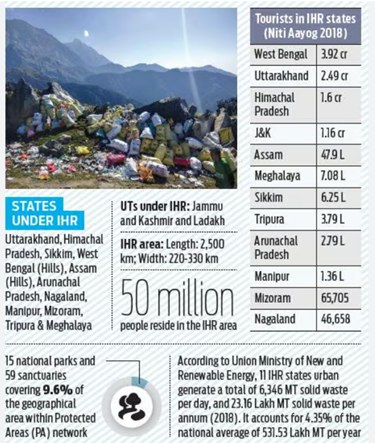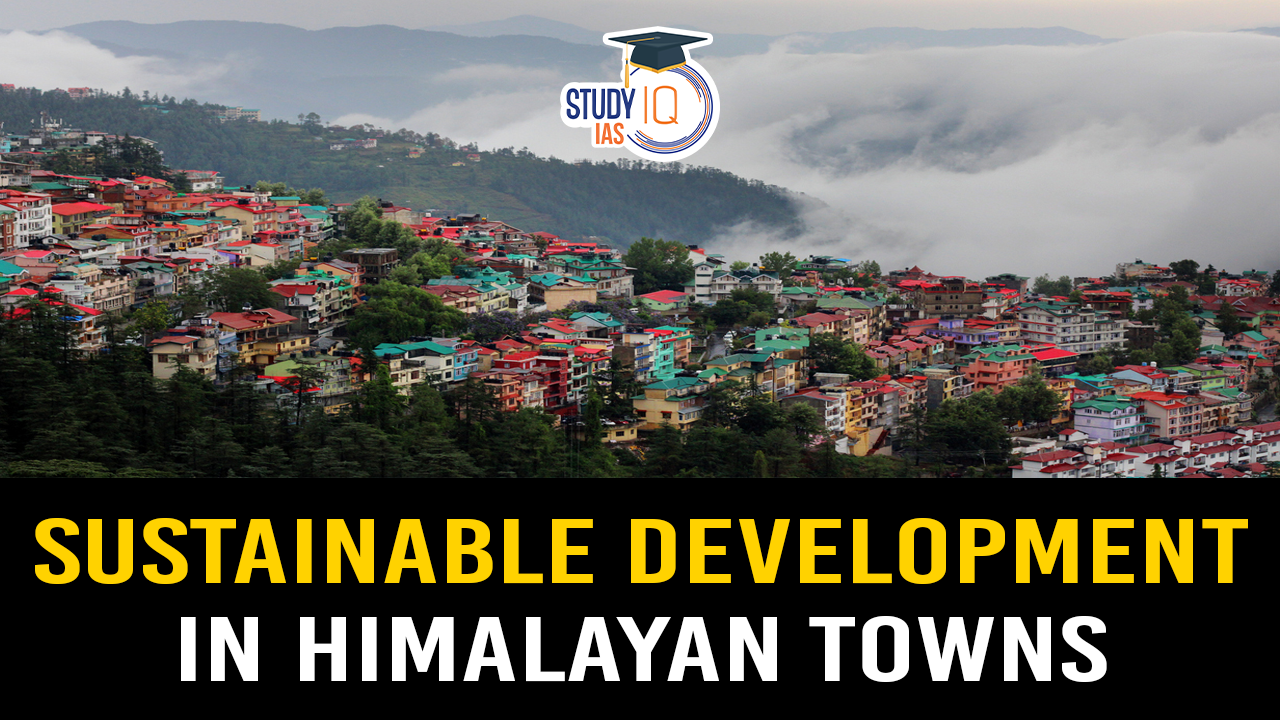Table of Contents
The Indian Himalayan Region (IHR), spanning 11 States and two Union Territories, experienced a decadal urban growth rate exceeding 40% from 2011 to 2021. This rapid expansion highlights the need for a tailored approach to urbanisation in the region.
Challenges in the Development of Himalayan Region Towns
- Civic Management Issues: Himalayan towns, including major cities like Srinagar, Guwahati, Shillong, and Shimla, struggle with managing sanitation, waste management, and water supply.
- Planning institutions often use models suited to plains, which fail to address the unique challenges of the mountainous terrain.
- Resource Shortages: Many cities face severe shortages in human resources.
- For instance, the Kashmir Valley has significantly fewer executive officers than needed.
- Urban Expansion: Towns are expanding into rural areas, depleting open spaces, forest land, and water resources.
- Srinagar, for example, saw a 75.58% increase in built-up areas between 2000 and 2020, with significant reductions in water bodies and increases in unregulated waste.

Causes of Urbanisation Challenges
- Pressure from Urbanisation: The IHR faces intensified urbanisation pressures from high tourism, unsustainable infrastructure development, and climatic changes such as altered precipitation and rising temperatures.
- These factors contribute to water scarcity, deforestation, land degradation, and pollution.
- Tourism Impact: Rapid tourism growth has led to the replacement of eco-friendly infrastructure with poorly designed and environmentally damaging constructions.
- Ecotourism is essential for maintaining long-term sustainability.
Recommendations for Improvement
- Updated Planning Processes: Urban planning in the IHR should involve detailed mapping, including geological and hydrological vulnerabilities.
- Climate resilience should be a key focus, with local involvement and a bottom-up approach.
- Financial Support: IHR cities cannot independently fund their infrastructure needs.
- The Finance Commission should increase intergovernmental transfers to at least 1% of GDP to ensure urban financing needs are met.
- Sustainable Development: A shift towards eco-centric urban planning is crucial.
- Incorporating public participation and focusing on sustainability is essential for the future of Himalayan town.


 Largest Desert in the World, Check Name,...
Largest Desert in the World, Check Name,...
 Places in News for UPSC 2025 for Prelims...
Places in News for UPSC 2025 for Prelims...
 Evaporative Demand: Main Drivers and its...
Evaporative Demand: Main Drivers and its...





















